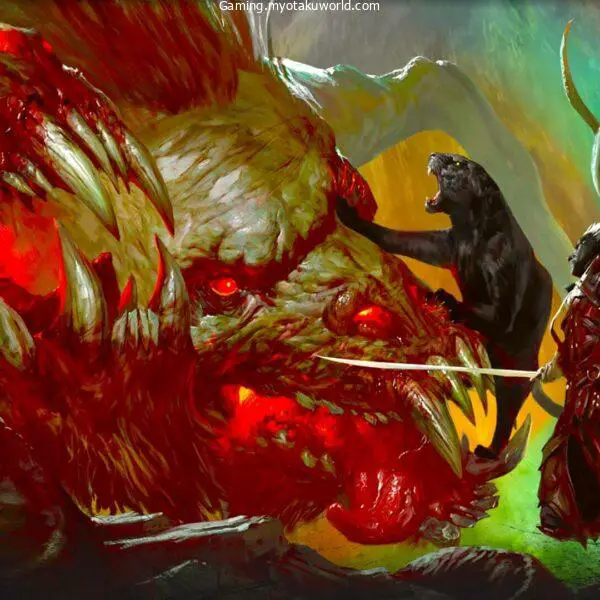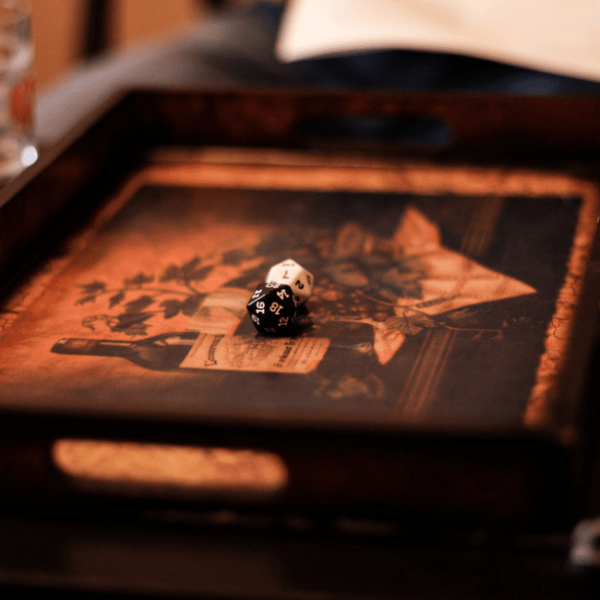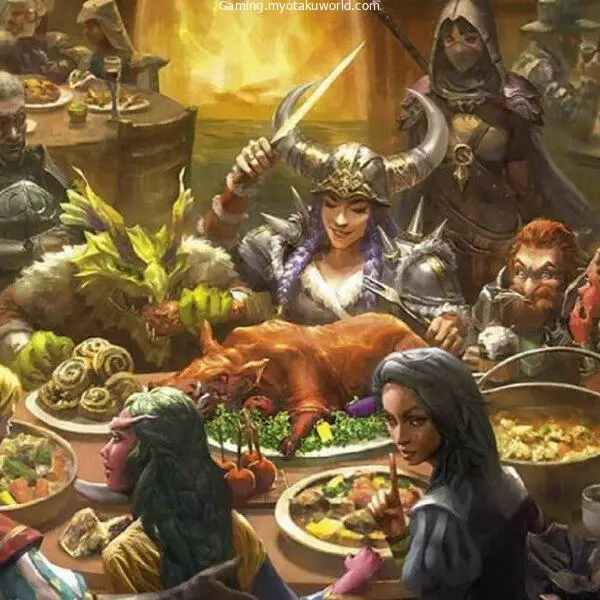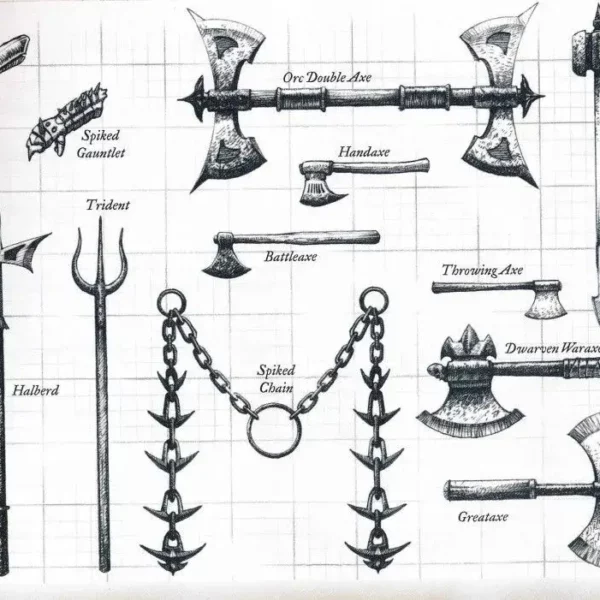A game of D&D will always have situations that require you to think outside of the box. It could get boring if the game keeps giving you the same things over and over again.
There are times in combat that we must stay far away from our enemy. You don’t always have to be close enough to them for you to get a hit.
Imagine if your enemy and you are separated by a huge chasm you can’t cross. What if your target is surrounded by flames that can severely damage you?
This dilemma can be solved if you look beyond the normal combat routine. You could use ranged attacks like spells and ranged weapons. But spells are not always available to your party.
What happens if all the spell slots are exhausted by your party’s casters? What would you do?
The light crossbow is an easy weapon to use. Because it is a basic weapon, it is a decent weapon.
It is not common for everyone to be proficient with martial weapons. Those who have been on the battlefield using their blades as soldiers, warriors, and the like are the ones who are. A wider range of people can use simple weapons.
This weapon might suit you if you’re a skilled caster and are looking for a more powerful weapon to defend yourself. Keep reading the Light Crossbow 5e Guide for all you need to know about it.
- What is the 5e light crossbow?
- How to use the 5e crossbow light?
- 5e light crossbow properties
- What classes can use a light crossbow?
- What classes begin with a light crossbow?
- Are light crossbows magical?
- FAQs
- What is the damage to a 5e light crossbow?
- What’s the range of a 5e crossbow light?
- What is the cost of a light crossbow?
- Can you use both a light crossbow AND a shield simultaneously?
- What is the best addition for strength, dexterity, or light crossbow attack rolls?
- What’s the difference between a heavy and a light crossbow?
- What’s the difference between a hand and a light crossbow?
- What’s the difference between a short bow and a light crossbow?
What is the 5e light crossbow?

The 5 th edition D&D includes a light crossbow. It is a simple, ranged weapon that deals 1d8 damage and is worth 25gp.
It weighs 5 pounds. The Player’s Handbook, page 149 gives a detailed description. The light crossbow looks like a small bow (called the prod), mounted horizontally on a wooden mainframe, which is known as a tiller.
It is typically made of wood, but it can also come in light steel.
It is a ranged weapon that can be used to attack far away from its range of 80/320 feet. These numbers may seem confusing but they will be clarified in the following sections.
The light crossbow is an easy weapon to use. A character doesn’t need to have any martial experience or exposure to it. Continue reading to find which classes are proficient in this.
How to use the 5e crossbow light?
A light crossbow attack on an opponent counts as a ranged strike. You must first determine your target when you launch a ranged attack.
They must be within the range of the light crossbow. Next, check whether you have ammunition or bolts for your light crossbow.
Your DM will then determine any modifiers required if you have more than one. If your target is shocked by your attack, for example, you would get an advantage on your attack roll.
Your DM will then roll your attack roll. This is typically a 1d20. Your 1d20 plus your proficiency bonus and your Dexterity modifier will result in your final attack roll.
If you don’t have proficiency with light crossbows, you can add your proficiency bonus to the attack roll.
A level five rogue would want to use his light crossbow to strike an opponent with armor class (or AC), 15 with his Dexterity modifier.
Rogues can use simple weapons and have a proficiency bonus (+3) so they’d need at least 9 on their 1d20 attacking roll.
Final attack rolls are a 1d20 plus their proficiency bonus (+3) + the Dexterity modifier (+3). If the 1d20 is a 9 or more, it will result in a number that hits the target’s AC which is 15.
5e light crossbow properties
These are the properties of the light crossbow:
- 80 – 320 ft.
- Munition
- Loading
- Two-handed
Range (80/320 ft.)
Two numbers would be given for ranged weapons in The Player’s Handbook. The first number represents the weapon’s range, while the second is it’s long-range.
The normal range of the light crossbow is 80 feet, while its long range extends to 320 feet. A ranged weapon’s normal range is the distance between the attacker and the place where the attack is normally performed. You can attack any creature that is within 80 feet of you.
If we take into account the standard length for each tile on the battle map, which is 5 feet, it would mean that you can attack any creature using the long crossbow 16 squares away. This is quite a distance!
An attack on a creature that is beyond its normal range (80 feet) will result in a disadvantage on your attack roll.
You must roll 2d20 when you are rolling for your attack roll, which is a 1d20. You then choose the lower of the two rolls.
If a rogue attempts to hit an opponent who is 120 feet away, they will be penalized on the attack roll. The rogue chooses the 3 if they roll a 19 or a 3. Talk about bad luck.
A weapon cannot be used to attack creatures beyond its long range. Their long range for light crossbows is 320 feet.
This would correspond to 64 squares of standard battle map tile size. A final point: if a hostile creature is within range of you, they will not be incapacitated and can still see you.
If you attempt to attack an enemy from a distance, but an enemy is nearby, you will be penalized.
Munition
A ranged attack can only be done with the light crossbow if you have at least one piece of ammunition.
Your attack would not be possible without them. Bolts are the ammunition used for light crossbows. The bolt looks like a dart-like projectile.
It is typically shorter and heavier than bow arrows, but it is still very similar in appearance. They have similar fletching to feathered arrows.
You can expend one bolt from your inventory when you attack with the light crossbow. As part of your attack, you will need to pick up the bolt from the designated box such as a quiver.
Before you venture into the wild, it is important to have enough of them. These bolts aren’t uncommon and can be found in fletchers, weapon shops, and armories. Crossbow bolts can be purchased for as little as 1 GP.
Half of the bolts can be retrieved after a battle if you fire out bolts with your light crossbow. You will need to spend at least a minute searching the battlefield for spent ammunition.
This can only be done after the battle is over. Otherwise, you risk being damaged by your enemies as you search. If you have used 20 bolts in one fight, you can search for 10 after the battle.
If your enemies are near you, your light crossbow can be used as an improvised weapon to launch a melee attack.
The attack does 1d4 damage once that happens, according to the Player’s Handbook, page 148.
You cannot also add your proficiency bonus on your attack rolls for attacks using improvised weaponry.
Loading
Light crossbows are slow to load a new bolt because of the way they are used and their structure.
Light crossbows can only fire one bolt per attack, regardless of whether they are using an action, bonus, or reaction.
Using this weapon will not allow you to use any abilities or features that can give you extra attacks.
You can only attack once with the light crossbow, no matter how many additional attacks you make.
Two-handed
Light crossbows require both hands to use effectively. The light crossbow cannot be used with one hand.
Other valuable items such as the shield, which grants +2 AC to anyone who uses it one-handed, are rendered useless.
The light crossbow can be held in one hand but cannot be used that way for a ranged attack.
You will need to dispose of any other objects that you may have on your hand, even if you want to use your light crossbow.
There are several ways to do this. You can simply place the object in your inventory, such as a backpack and a Bag of Holding. You can also sheathe the weapon if you have it.
This will cost you action when in combat. Drop it and you won’t lose an action. However, you should always pick it up at the end of the battle.
What classes can use a light crossbow?
Although everyone can use a light bow, not all are proficient. Almost everyone can use a light crossbow, but only one class is proficient: the Druid.
Below are the classes that can use the light crossbow proficiently and efficiently.
- Artificer – Page 9 of Tatasha’s Cauldron of Everything
- Barbarian (Player’s Handbook page 46).
- Bard (Player’s Handbook page 51)
- Cleric – Player’s Handbook, page 56
- Fighter (Player’s Handbook page 70)
- Monk (Player’s Handbook page 76).
- Paladin (Player’s Handbook page 82).
- Ranger (Player’s Handbook, page 89)
- Rogue (Player’s Handbook, page 94)
- Sorcerer (Player’s Handbook, page 99)
- Warlock (Player’s Handbook page 105)
- Wizard (Player’s Handbook, page 112)
All classes, except for the Druid, are proficient in using the light crossbow. Nearly all of them have that proficiency because they can use simple weapons and light crossbows.
However, the Wizard and Sorcerer classes are proficient in using this weapon as is clearly stated.
What classes begin with a light crossbow?
All classes, except five, can use a light crossbow as part of their start equipment. Below is a list of them.
- Artificer: Any two simple weapons you choose + a light crossbow, and 20 bolts
- Barbarian: Two handaxes or any other simple weapon.
- Bard: Bard is a rapier, a longsword, or any other simple weapon.
- Cleric: A light crossbow with 20 bolts and any simple weapon.
- Monk: Is a short word or simple weapon.
- The Sorcerer: Is a light crossbow with 20 bolts and any simple weapon.
- Warlock: A light crossbow with 20 bolts and any simple weapon; or any simple weapon + any other weapon
This list does not include the Paladin, Ranger, and Fighter, classes. A simple weapon is not enough for fighters.
They must start with a weapon that can be used in combat. The only limitation for Paladins is that they can have a simple melee weapon, but not one with range.
Rangers can be described as paladins. However, they have a longbow as part of their initial equipment.
Rogues have the option of having a shorter bow rather than a light crossbow so that they can use a ranged weapon. As weapons, wizards have only a quarterstaff or a dagger.
Are light crossbows magical?
Usually, no. The light crossbow is a simple weapon that can be made by skilled weaponsmiths.
Because they are simple weapons, they are easy to find in battle. There are magic light crossbows that you can add to your campaign.
These items are listed below. If the column is “A”, it means that the item requires attunement. If not, it is otherwise.
| Item Title | Rarity | A. | Source |
| Crossbow Light +1 | Uncommon | No | Dungeon Master’s Guide, page 213 |
| +2 Light Crossbow | Rare | No | Dungeon Master’s Guide, page 213 |
| +3 Light Crossbow | Very rare | No | Dungeon Master’s Guide, page 213 |
| Crossbow for Corpse Slayer Light | Rare | Yes | Page 266 of Explorer’s Guide to Wildemount |
| Drow +1 Light Crossbow | Unknown | No | Monster Manual, page 126 |
| Hellfire Light Crossbow | Uncommon | No | Baldur’s Gate, Descent Into Avernus page 223 |
| Light Crossbow of Certain Death | Rare | No | Page 270 of the Explorer’s Guide to Wildemount |
| Light Crossbow of Warning | Uncommon | Yes | Dungeon Master’s Guide, page 213 |
| Vicious +1 Light Crossbow | Unknown | No | Acquisitions Incorporated page 149 |
| Vicious Light Crossbow | Rare | No | Dungeon Master’s Guide, page 209 |
FAQs
What is the damage to a 5e light crossbow?
It deals with 1d8 Piercing Damage.
What’s the range of a 5e crossbow light?
It has a range of 80 feet and a range of 320 feet. You can normally make a ranged attack against a target within 80 feet of you. You will lose a disadvantage on the attack roll if you are more than 80 feet from your target. A ranged attack cannot be made further than 320 feet.
What is the cost of a light crossbow?
It weighs in at about 5 lbs and costs 25 GP. You would pay 1 GP for a pack of 20 bolts.
Can you use both a light crossbow AND a shield simultaneously?
No, you cannot. Light crossbows can be used as two-handed weapons. You must use both your hands to control the weapon and to attack. A light crossbow can only be used with one hand to attack. You must have one hand free to make a shield.
What is the best addition for strength, dexterity, or light crossbow attack rolls?
The light crossbow can be used as a ranged weapon. You add your Dexterity modifier to attack rolls with the weapon and the damage.
What’s the difference between a heavy and a light crossbow?
Both ranged weapons. However, heavy crossbows inflict 1d10 piercing injury while light crossbows inflict 1d8. Heavy crossbows can be used as martial weapons, while lighter crossbows can be used as weapons. Therefore, heavy crossbows are less popular than light crossbows.
What’s the difference between a hand and a light crossbow?
Hand crossbows can be compared to heavy crossbows because they are both considered martial weapons. Hand crossbows can only deal with 1d6 piercing injury. They are light weapons that can be used to carry two weapons and one hand.
What’s the difference between a short bow and a light crossbow?
Short bows look and function very differently to light crossbows. Short bows employ arrows rather than light crossbow bolts. They also only deal with 1d6 piercing injuries. Both are ranged weapons, however. Navigation after navigation









